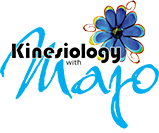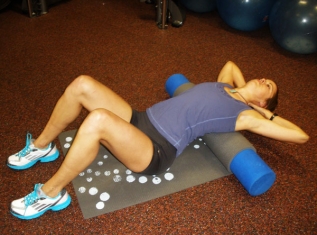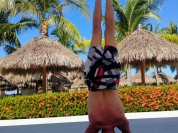Muscle imbalances can arise for a whole variety of reasons, but most commonly from overly repetitive movement patterns, or in response to demands on the body for which it is under-trained. Events throughout our lives can contribute to muscular compensations leading to decreased function in daily activities and sport performance. Aging, injuries, illness, stress, repetitive motion disorders and deficient posture, will likely lead to unhealthy responses such as soft tissue tightness. Hypertonic muscles (with abnormal resting tone or rigidity) and fascia are likely to reduce blood flow to tissues of the body, and interfere with nerve conductivity efficiency and the contraction/relaxation phases of muscle fibers. In other words, unnecessary tension in the soft tissue can contribute to loss of power, strength, coordination, agility, movement precision, and overall performance.
Muscles imbalances may lead to symptoms like:
- generalized or focalized aching or pain in the muscles or joints
- feeling of stiffness and tension
- decreased range of motion (ROM) in the muscles and joints
- headaches
- general fatigue
- motor and postural compensations
- muscle weakness
- decreased kinesthesia (proprioception)
- decreased coordination
- decreased balance
- decreased sport performance
Majo’s kinesiology assessment may consist of:
- History taking to find out about your sport or physical activity background, past injuries, past or actual musculoskeletal complaints, physical goals, lifestyle, etc.
- Posture analysis to see if the way you stand may affect your overall well-being, or if your symptoms potentially affect the way you stand, move and function.
- Range of motion evaluation to test your muscle and joint flexibility.
- Strength testing to investigate compensatory strengths and resulting weaknesses.
- Functional movement testing to further confirm potential compensation patterns that may be occurring.
- Myofascial impairment investigation such as fascial adhesions, scar tissue, muscle knots and taut muscle bands, using hands-on techniques.
- Review of your work station to assess ergonomics and recommend adjustments to eliminate potential causes of pain and symptoms.
- Assessment of daily activities, work tasks, sports equipment and technique to seek root causes of movement pattern deficiencies that lead to injury and decreased performance.
Majo will analyze the results and tailor a corrective exercise program to help rectify specific muscle imbalances. A digital video of the exercises can be provided and accessed by smart phone or computer. Majo can monitor and evaluate progress and suggest exercise adjustments or upgrade the whole program as needed.
Majo’s choice of exercises may range between:
- Self myofascial release (MFR) techniques, using equipment such as the massage ball, foam roll, trigger point ball, roller stick, and trigger wheel.
- Active release stretching techniques, such as Active Isolated Stretching (AIS) and Proprioceptive Neuromuscular Facilitation Stretching (PNF), using equipment such as a common chair, rope, exercise ball and yoga mat.
- Core strength exercises to enhance spine stability and reinforce your shoulder and hip girdles.
- Functional exercises that relate to your daily activities and sport to correct deficiencies discovered during assessment.
- Specific strengthening exercises targeting weak key muscle groups.
- Balance exercise to increase core stability and overall motor control.
- Cardiovascular exercise to increase specific muscle stamina and increase specific joint stability.
Improving muscle balance and body symmetry plays a positive role in well-being as it helps:
- decrease stress on soft tissue and skeleton
- reduce chronic pain
- rehabilitate soft tissue injuries
- improve posture
- improve functional capacity (what one can do on a day to day basis)
- reduce risk of injuries
- enhance physical performance as it improves the body’s limiting factors
To improve sport performance and reach higher levels of function in your work and daily life, biomechanical efficiency is critical. Majo takes great pleasure in learning about your strength and flexibility requirements and providing an individualized corrective exercise program to help you discover your full potential.
Article written by: Majorie Lauzon
Copyright 2012
References: .
- Stuart McGill, Ultimate Back Fitness and Performance, Fourth Edition, Backfitpro Inc., Wabuno Publishers, 2009
- Thomas W. Myers, Anatomy Trains: Myofascial Meridians for Manual and Movement Therapists, Second Edition, CHURCHILL LIVING STONE ELSEVIER, 2009
- Ann Frederick & Chris Frederick, Stretch to Win: Flexibility for improved speed, power and agility, Human Kinetics, 2006
- Aaron L. Mattes, Active Isolated Stretching: The Mattes Method, Published by Aaron L. Mattes, 2000
- David Weinstock, NeuroKinetic Therapy: An Innovative Approach to Manual Muscle Testing, North Atlantic Books, 2010



